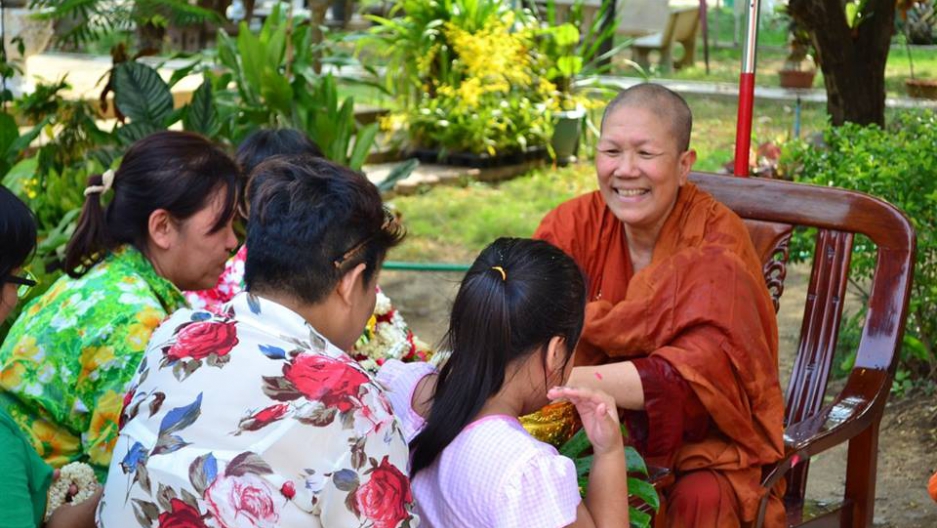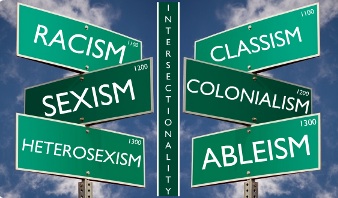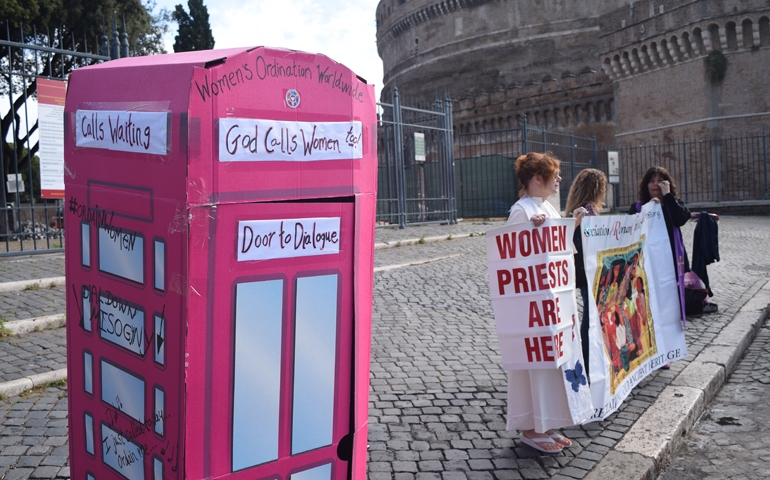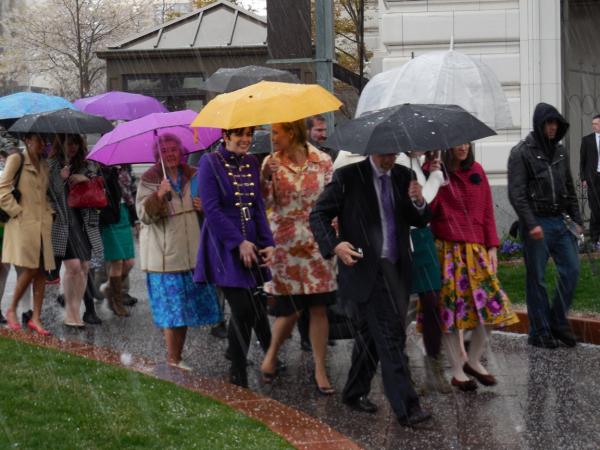Unspoken Rules
At an LDS neighborhood Fourth of July party this week, we ate the traditional potluck mystery salads, burgers, hotdogs and a lot of junk food. All the adults gathered in lawn chairs around the cul-de-sac, while an endless number of kids ran the neighborhood. Each family contributed a big box of fireworks for a communal fireworks display to be held as soon as the sun set.
A little after 9:00 p.m., the show began. I have witnessed more than fifty Fourth of July celebrations, and for the first time, I realized the gender segregation involved in a fireworks display. The first round of fireworks was conducted entirely by neighborhood fathers and teenage boys. However, midway through the display, I noticed a young woman in the middle of the swirling smoke lighting fireworks. Of the more than fifty females in attendance, only one young woman participated in the fireworks display. This caught my attention. Why did it seem so odd to see her out there? Why only her? Why weren’t other women also lighting firework? Why, without a single word spoken, did the women clean up the food and gather the children, while the men and teenage boys organized and executed the fireworks displayed?

Unspoken rules permeate every part of my Mormon culture. This is not unique to Mormonism. Unspoken rules enforce sexist practices everywhere, but in my culture, they carry extra weight. In my culture, we are told that gender is an immutable characteristic, and all of the rules that segregate us one from the other are divinely decreed from on high.
This fireworks example may sound trivial, but it is one small example of unspoken rules that can have a terrible aggregate impact on a life. They become the unseen background of our lives. Because they are never spoken, they often go unnoticed. But, they effectively deliver the message to boys that men are the actors in our society, while girls learn that their lives are to be passive and secondary to the lives of the boys. There is nothing uniquely male about lighting a fuse, except that it demonstrates that boys “act” while girls are to sit quietly on the sidelines.
I applauded the rule breakers! I applaud the young woman, who broke the unspoken rule and placed herself in the middle of the firework’s display! We need more rule breakers. We need people who can identify these unspoken rules and intentionally break them.
Here are just a few of hundreds of unspoken sexist rules.
- Men drive, while women ride in the passenger seat.
- Women care for children.
- Women care for the elderly.
- Women cook, except when the cooking is highly rewarded.
- Men hunt and fish, while women clean up camp.
- Men are expected to work full-time jobs outside the home, while women are expected to work in the home.
- Men earn “primary income,” while women earn “secondary income.”
In the comments, please list other unspoken sexist rules. Let’s get out there are break the rules!
Lessons from Dhammananda

Credit: ThaiBhikkhunis.org
Dhammananda is both a mom and a monk in Thailand, which makes her a rarity. Women are not allowed to be monks in Thailand, so Dhammananda was ordained through a loophole in Sri Lanka. There are now 100 monks who identify as women in Thailand.
In her interview, she discusses the doctrinal foundation for the ordination of women and the resulting fall out she has experienced from the other monks who identify as men.
I appreciated the similarities I saw with my own experience as well as the insights I gained. It is fascinating that, despite the obvious theological differences between Buddhism and Mormonism, the patriarchal influence is strikingly similar in its method of oppression.
This is well worth the read.
Walk the Walk

Source: Embracing the Red Queen
There is an old saying about “walking the walk, and not just talking the talk.” Too often in our progressive Mormon circles, we simply pay lip service to the importance of intersectionality being a “main ingredient” in the work we are doing instead of just a garnish or a decoration on the side.
A lot has been written and said on this topic, but as we press forward in our efforts to achieve equality in faith we must make sure that at every step of the way we are doing what we need to do to make sure that our vision of the ordination of women has space for ALL women.
Yes Means Yes: How Indoctrinating Women Undermines Consent

On May 16th, I attended a live Mormon Stories event entitled: “Rape in Mormon Culture.” Donna Kelly, a sex crime prosecutor with more than two decades of experience, explained the concept of consent. She explained that if someone says no, obviously that is not consent. Unfortunately, almost all U.S. jurisdictions operate on a flawed “No means No” standard. However, if someone fails to say “no,” that should not be considered consent for several reasons: They may be afraid. They may be unconscious or otherwise incapable of saying “no.” Likewise, if someone is intimidated into saying yes, that is not consent. For example, the perpetrator may work to overcome a victim’s “No” by repeatedly asking over and over again. If someone’s free will is overcome by repeated asking, that is not consent. The solution? We must adopt a “Yes means Yes” standard of consent. According to Donna Kelly, the “Yes means Yes” standard requires an enthusiastic “Yes!,” with no reservations on the part of the consenting party. Only this “Yes means Yes” standard of consent can guarantee that a person has truly given consent.
Since that night, the “Yes means Yes” concept has captured my attention and caused me to think about consent as it relates both to sexual acts, and also to consent in a broader context. Consent should be a part of all decisions that we make in our lives. Specifically, I have been thinking about the indoctrination of women in my own Mormon culture, and how gender roles undermine the concept of consent.
When I was married in the Salt Lake Temple in 1981, my new “wife” was required to promise to “obey” me as her husband. This language was subsequently changed from “obey” to “harken,” but it carries the same meaning. Women who do not “obey” men cannot be exalted. Rather they face Eternal punishment. For an active, temple attending Mormon woman, this is not a promise made once and forgotten. Active, women make this promise in Mormonism’s holiest space every time they attend an endowment ceremony. But, the story does not start with her first visit to the temple.
For most Mormon women, this vow is the culmination of a lifetime of indoctrination. As a young girl in a Mormon home, she will typically see the patriarchal order exemplified in her family structure. She will be told that her father possesses divine priesthood power, which her mother cannot possess. Thus, her father is the ultimate authority in the home. He may be a benevolent authority, but still the authority in the home.
When she turns eight, she will be taken to the local ward bishop for a baptism. Like her father in her family, she is taught that the bishop is God’s authority over her in her local ward. She quickly learns that the concepts of God, authority and maleness are all integrated. As a female, she learns that her role is always subject to male authority.
At twelve, she will watch her male peers be ordained to the priesthood. As a female, no matter how righteous, how smart, how talented, she will never have the authority given to a twelve-year-old boy in her culture.
As a teenager, even the smallest sexual infraction will subject her to the authority of her male bishop. She will likely be compelled to discuss the most intimate parts of her life behind a closed door, with this middle-aged male authority figure. The message is clear; her sexuality is something to be discussed with and controlled by men.
So, the temple covenant to “obey” (or harken) to the law of her husband is no surprise. It is the culmination of a lifetime of learning, and a lifetime of indoctrination, a lifetime of subjugation.
What does consent look like in this context? Having been robbed of her own voice and threatened with Eternal punishment for failing to obey, acquiescence to male control cannot really be seen as consent. Her religious institutions have conspired during the entirety of her life to deny her real control over her own person.
The work of Ordain Women is sacred. By advocating for ordination and equality in the Church, Ordain Women works to restore the voices of women. Ordain Women is working to strip away the institutions of inequality, which deny women the ability to make choices freely as fully empowered human beings. Only after this system of male domination is dismantled and replaced with institutions of equality can women realize their full potential, and freely consent with an enthusiastic “Yes” that truly means “Yes!”
Early Christianity
Last year I was asked to comment on one of the LDS Church Gospel Topic Essays—“Are Mormons Christian?”—at the Sunstone West Symposium. Beginning in 2013, the Church “began to publish straightforward, in-depth essays on a number of topics,” prompted, many believe, by the accessibility of historical information on the Internet. Former Church historian Steven E. Snow explained the Church’s new openness: “I think in the past there was a tendency to keep a lot of the records closed or at least not give access to information. But the world has changed in the last generation—with the access to information on the Internet we can’t continue that pattern; I think we need to continue to be more open.”
According to the Church’s website, “The purpose of these essays, which have been approved by the First Presidency and the Quorum of the Twelve Apostles, has been to gather accurate information from many different sources and publications and place it in the Gospel Topics section of LDS.org, where the material can more easily be accessed and studied by Church members and other interested parties. … Ongoing historical research, revisions of the Church’s curriculum, and the use of new technologies allowing a more systematic and thorough study of scriptures have all been pursued by the Church to that end.”
Not surprisingly, the essay “Are Mormon’s Christian?” affirms the Church’s Christian status as a restoration of early Christianity. “Christians have vigorously disagreed about virtually every issue of theology and practice through the centuries,” the essay declares, “leading to the creation of a multitude of Christian denominations. Although the doctrine of The Church of Jesus Christ of Latter-day Saints differs from that of the many creedal Christian churches, it is consistent with early Christianity.” But is it fully, particularly with regard to women’s ecclesiastical authority?
Scholars, historians and, yes, even leaders of other patriarchal religious traditions are increasingly uncovering evidence of women’s expanded authority in early Christianity. Karen Torjesen, Margo L. Goldsmith Chair of Women’s Studies in Religion at Claremont Graduate University and author of When Women Were Priests: Women’s Leadership in the Early Church and the Scandal of their Subordination in the Rise of Christianity, talks about her work in an interview with the Berkeley Center for Religion, Peace, and World Affairs:
When I came back to the United States from Germany, it was 1982, and the women’s ordination movement was in full cry. Those who were arguing against ordination of women were arguing on the basis of tradition and the precedents and teachings of the early church fathers. Those fathers were the very people I had studied …
So I started writing a paper that included an analysis of gender, based on my work. I found myself thrust into the fray of the women’s ordination debates. I gave a first paper at the Academy of Religion meeting in San Francisco. It was a critique of the analysis of the church fathers. But my approach was to read the history as a historian, rather than prescriptively, as others were doing. In looking at the heated debates as a historian, it was eminently clear that because there were fierce debates around the roles of women in the early church, women were obviously doing the things that the church fathers were denying; otherwise there would not have been debate. Reading it all as a historian it was very clear that women in fact were doing many things in the church: baptizing and so forth.
So I changed focus and began to work on a book on the topic. … I found myself doing research and working with women’s groups. I began to see the power of this kind of research …
So the book emerged, When Women Were Priests. It was about the women who did hold church office in the early church, and the gradual eclipse of their roles, and of women’s space, as public space took on a far greater role and women were relegated to the private space, around the late third century.
As Torjesen suggests, the earliest Christian communities met in homes, where women often led congregations. It was only when Christianity left the domestic sphere and entered the public sphere—which at that time was by definition and tradition male—that Christian women lost ecclesiastical power. Further, since many scholars, including Torjesen and a growing number of Mormon academics, point out that even Biblical texts refer to women with ecclesiastical authority, such as deacons and apostles (see Romans 16 NRSV), shouldn’t we as a Church, in a spirit of openness, reconsider whether Mormonism is “consistent with early Christianity” without women’s ordination? Given the evidence, how can we not?
Where the Spirit Lives
I know money. My job involves me in decisions about large sums.
I have seen wealth. I have met in conference rooms, which soar high into the New York skyline.
I understand power. I’ve sat at giant wooden tables in large granite buildings, where big decisions are made.
The spirit does not live there.
I’m young. I carry a pack on my back, and walked among the trees of Utah’s high Uinta Mountains.
I listen to birds sing in the trees. I see squirrels scamper by. Deer approach, and then run back into the trees.
Granite peaks soar high into the sky, holding an endless number of crystal clear lakes.
In the afternoon, after the rain, the sun dances and sparkles on the ripples that quietly traverse the lake.
I sit, I watch, I meditate. The spirit whispers, God is with you here.
An earthquake shatters Haiti. My twenty-one old daughter boards a plane and heads into the devastation. I am afraid. But, among the poor and broken, she finds the spirit there.
It’s Christmas, and we are at a cabin near a stream. It is a place for addicts, who have no money, no power, no wealth. We drop off a few presents. The handful of men are grateful. We find the spirit there.
I’m at the front of a long line of mostly women. We are walking into the heart of Mormon power, asking equality. The wind blows, the hail stings, and God is with us there.
I’m with my best friend walking to a parade. People are rushing by. She stops and kneels down next to a homeless woman, who is broken and has nothing. She touches the woman, and offers hope. The spirit cried, “I am here!”
The Spirit is not with the rich, nor the powerful. We cannot buy buildings big enough or opulent enough to contain the Spirit. I have found God in quiet moments of contemplation, and most of all with those who dare to try to make this world a better place.
“. . . I assure you that when you have done it for one of the least of these brothers and sisters of mine, you have done it for me.” Matthew 25:40.
The Church Facing Lawsuits from Navajo Nation Court
As a church, we frequently try to dismiss and overlook the damage inflicted upon marginalized groups within our community by ignoring the long-term affects of the harm caused by discriminatory policies. These past policies expand beyond individuals and into the communities that continue to confront the deep and longstanding embedded issues. When we support the marginalization of a group, we take away their power and voice, and racism becomes the veil that conceals all manner of violence and harm suffered by the powerless.
The Navajo Nation Court is providing a venue where the atrocities suffered by some of its members can finally be voiced. Two lawsuits were filed against The Church in the Navajo Nation Court by people who participated in the now defunct Indian Student Placement Program. The lawsuits allege repeated sexual abuse and mistreatment. The Navajo Nation Court is calling for issued apologies and Church-wide changes that would protect children from people previously accused of sexual abuse and mandate reporting to state officials.
The Mormon Church is challenging the jurisdiction of the Navajo Nation Court as well as questioning the Court’s ability to call for change throughout the entire Mormon Church.
Regardless of the legal ability of the Navajo Nation Court to impose church-wide policy changes, I would hope that the Church would embrace this call to action as a chance to vigorously defend and protect the “least of these” by championing the protection of the previously unprotected.
The Jubilee for Women Priests

I have been following, with rapt interest, the events in Rome this past week. Women and men gathered in Rome to participate in a Jubilee for and about female ordination in the Catholic church. It was exciting and interesting and filled me with hope.
And also a bit of despair.
You see, this Jubilee coincided with the Pope’s Jubilee in much the same way many or our own OW events have coincided with General Conference. Of course, I couldn’t help but make constant comparisons in my head.
We have tried to attend the Priesthood Session of Conference (twice!), and we’ve been ignored.
We have provided pictures, documentation, and live demonstrations of the relationship between women and the priesthood throughout our church’s history, and we’ve been ignored.
We have sent letters and asked for meetings, and we’ve been ignored.
We have gathered testimony from hundreds of women about their eagerness to participate more fully in the church, and we stood outside the Church Administration Building with those letters for an entire weekend, and then we mailed those testimonies to multiple people inside… all of which has been ignored.
I am so excited for our Catholic sisters, who were able to meet with their church leaders and deliver their petitions to Pope Francis. Truly, it is so wonderful, and I shed happy tears on learning the news.
But also I shed some tears for me, and for my Mormon sisters. Because it is a stark reminder of all of the doors that have been closed to us.
Equality is not a Feeling

From the moment I first saw the website, my work with Ordain Women has always been about an answer to years of personal prayer. I felt a call to serve more fully: I wanted to hold the priesthood. It wasn’t really until I read the Doves and Serpents series “Equality is not a Feeling” that I realized what a systemic problem our gendered priesthood is. Today, I invite you all to revisit this series of posts that takes the issue of gendered priesthood authority out of the realm of personal anecdote and gives it numbers and real consequences in our community.
If, once you have finished reading even a few of these posts, you still believe that a gendered priesthood is good for our church—that we are operating at full capacity and allowing women and girls to develop their true and ultimate spiritual potential—then I welcome the chance to hear your thoughts. If, though, you see the structural problems and spiritual limitations our gendered priesthood creates, I challenge you to consider submitting a profile at https://ordainwomen.org/submit/.
Love vs. Patriarchy

As a young man living in patriarchy, I was taught to love abstract ideals more than people of flesh and bone.
As a young man living in patriarchy, there was nothing greater than to sacrifice my life for God, Church and Country.
As a young man living in patriarchy, my Country was lead by old white men.
As a young man living in patriarchy, only old white men stood at the head of my church.
As a young man living in patriarchy, I was shown pictures of an old white man, and told, “this is God!”
As a young man, I learned that obedience to patriarchy is everything.
When it came time to love, old white men told me a secret.
Don’t worry about who you love, they said. As long as she is devoted to us, you will be just fine.
When it came time to love, real women with hearts beating in their chests did not matter.
Real hearts, real flesh, real minds had to be subdued.
When it came time to love, real love had to be restrained.
When it came time to love, devotion and obedience to patriarchy had to reign.
Children came, and I became a patriarch.
Children came, and the old white men spoke again.
Children came, and they had to learn obedience to those old white men.
Children came, and they must be taught that love is just a secondary thing.
Children came, and my duty was to teach devotion to the abstractions of patriarchy.
“Dear children, more than love, devote yourselves to the demands of God, Church and Country!”
One day, I had the courage to peak behind the curtain.
One day, I saw that old white men are just old white men.
One day, I learned that devotion to old white men led my life to ruin.
One day, the spirit whispered that love matters more than patriarchy.
One day, the spirit said that all of God’s children are equal in her eyes.
One day, I learned that true love can only exist with true equality.
Now I understand that obedience to the patriarchy is the road to unhappiness.
Now I understand that obedience is not morality.
Now I understand that all of God’s children are of equal worth in this world.
Now I understand that patriarchy and devotion to abstract ideas is the big lie.
Now I understand that Love matters most.
True Love cannot exist where patriarchy reigns.











